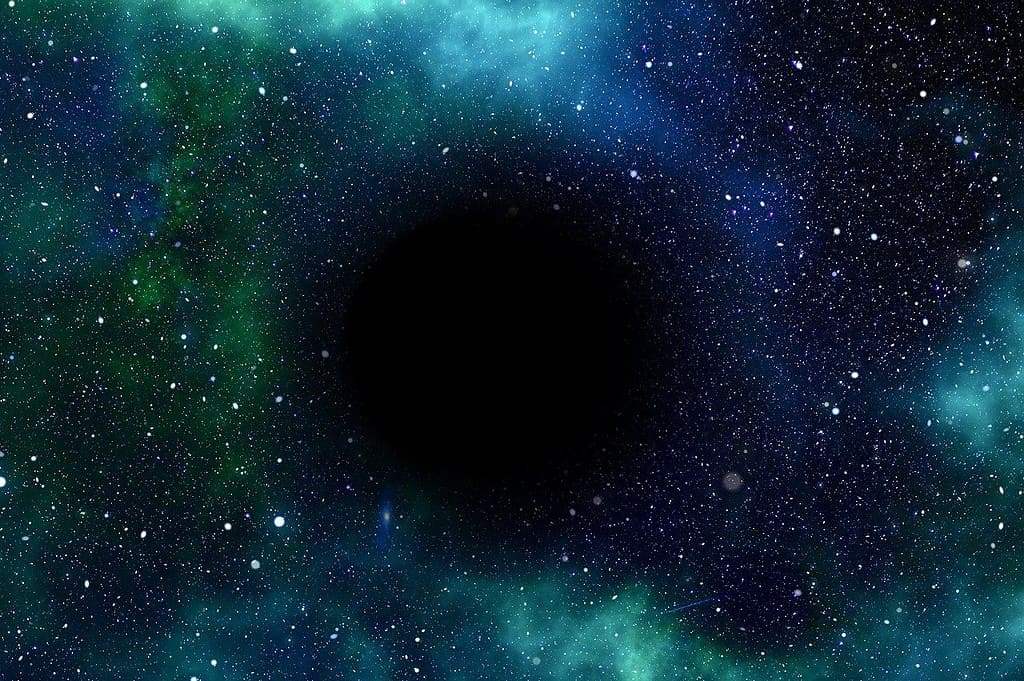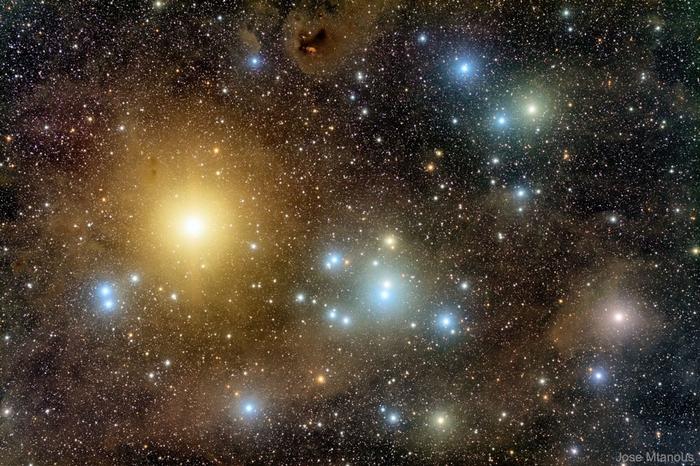
In a star cluster just 150 light-years away lie hints of possible black holes. If accurate, the black holes in the Hyades cluster would be the closest ever recorded to Earth.
Ever since their discovery, black holes have captivated the attention of scientists worldwide as one of the Universe’s most enigmatic and captivating phenomena. This is particularly true for small black holes because they have been observed during the detection of gravitational waves. Since the first gravitational wave detections in 2015, experts have observed many events that correspond to mergers of low-mass black hole pairs.
In the multi-university study, published in Monthly Notices of the Royal Astronomical Society, astrophysicists recreated the current Hyades state using computer simulations that follow the movement and evolution of each star in the cluster.
“Our simulations can only simultaneously match the mass and size of the Hyades if some black holes are present at the center of the cluster today (or until recently),” says Stefano Torniamenti, University of Padua postdoctoral researcher and first author of the paper.
The presence of black holes within the Hyades star cluster has far-reaching implications for comprehending how these enigmatic objects come into existence. Astrophysical models concerning merging binary black holes across the Universe stipulate that a significant fraction of stellar-mass black holes must experience minimal natal kicks. This condition is essential to explain the gravitational wave detections that fundamentally revolutionize our understanding of the cosmos. The retention of black holes in open clusters with relatively low escape velocities (approximately one km/s) aligns with this requirement.
The researchers propose that the black holes in the Hyades star cluster may have formed through a phenomenon known as dynamical mass segregation. In this process, more massive entities, such as black holes, gravitate toward the cluster’s center due to gravitational interactions with neighboring stars. Due to the cluster’s relatively low escape velocity, this mechanism may have been crucial in their formation and subsequent preservation.
This study isn’t just a revelation confined to the Hyades star cluster; it also carries significant implications for detecting black holes in other star clusters. Researchers propose the presence of more black holes can be deduced from the cluster density profiles. This insight is invaluable for future star cluster studies and contributes to our evolving understanding of black hole formation and behavior.
“This observation helps us understand how the presence of black holes affects the evolution of star clusters and how star clusters, in turn, contribute to gravitational wave sources”, says Mark Gieles, first author and a member of the University of Barcelona’s Department of Quantum Physics and Astrophysics. “These results also give us insight into how these mysterious objects are distributed across the galaxy”.







